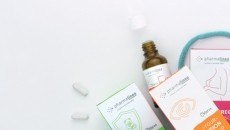Omega-3 with high fat meal eases cardiovascular changes
meal may counter the detrimental effects on arterial stiffness,
suggests new research.
The small study with 17 healthy men adds to an ever-growing body of science supporting the cardiovascular benefits of omega-3 consumption, which all started with Jörn Dyerberg, Hans Olaf Bang and Aase Brondum in the early 1970s. Increased consumption of EPA, and the longer chain docosahexaenoic acid (DHA), has previously been linked to improved heart rhythms, reduced risk of a second heart attack, and reduced risk of cardiovascular disease. Researchers form King's College London investigated how ingestion of EPA with a high fat meal could affect vascular function post-prandially (after a meal) - something that has not previously been studied. Wendy Hall and co-workers report their findings in the new issue of the Journal of Nutrition. The volunteers were randomly assigned to consume a high fat meal (51 grams of fat per serving) with one meal containing only high-oleic sunflower oil (HOS) or HOS plus five grams of EPA. A one-week wash-out period was observed before the men consumed the other meal. On both occasions, a second high fat (44 grams of fat) was consumed four hours after the first. Hall and co-workers report that, as could be expected, blood levels of EPA increased following the EPA-supplemented meal, peaking at 2.10 millimoles per litre (mm/L) five hours after consumption, while no such increases were observed in the HOS-only group. Stiffness of the arteries, measured using digital volume pulse (DVP) to derive a stiffness index (DVP-SI), showed significant improvements after the EPA-supplement meal, compared to the control group, report the researchers. No differences between the HOS and HOS plus EPA meals were observed three hours after consumption, however. "In conclusion, adding EPA to a high-fat meal results in acute changes in vascular tone, independent of changes in oxidative stress," wrote Hall. Supporting science The study follows on the heels of similar results, published last September in the European Journal of Clinical Nutrition (doi: 10.1038/sj.ejcn.1602886), that supplementation with omega-3 fatty acids may improve the elasticity of blood vessels and improve overall cardiovascular health. The older study reported improvements in arterial elasticity but no effect on blood pressure in overweight hypertensive patients. This challenged previous studies that reported improvements in blood vessel elasticity, but also reductions in blood pressure and levels of inflammatory markers. Such conflict in the science highlights the need for considerable further research into the area. Sourcing concerns The risk of pollutants from oily fish, such a methyl mercury, dioxins, and polychlorinated biphenols (PCBs) have led to some to advocate a reduction in fresh fish intake, despite others advising that the benefits of fish consumption outweigh the risks. Such conflicting views on fish intake have seen the number of omega-3 enriched or fortified products on the market increase as consumers seek omega-3s from 'safer' sources. Most extracted fish oil is molecularly distilled and steam deodorised to remove contaminants. But fears about dwindling fish stocks have pushed some industries to start extracting omega-3s from algae. Indeed, companies such as Martek Biosciences and Lonza are already offering algae-derived omega-3 DHA as a dietary supplement. Source: Journal of Nutrition February 2008, Volume 138, Pages 287-291 "A High-Fat Meal Enriched with Eicosapentaenoic Acid Reduces Postprandial Arterial Stiffness Measured by Digital Volume Pulse Analysis in Healthy Men" Authors: W.L. Hall, K.A. Sanders, T.A.B. Sanders, P.J. Chowienczyk











